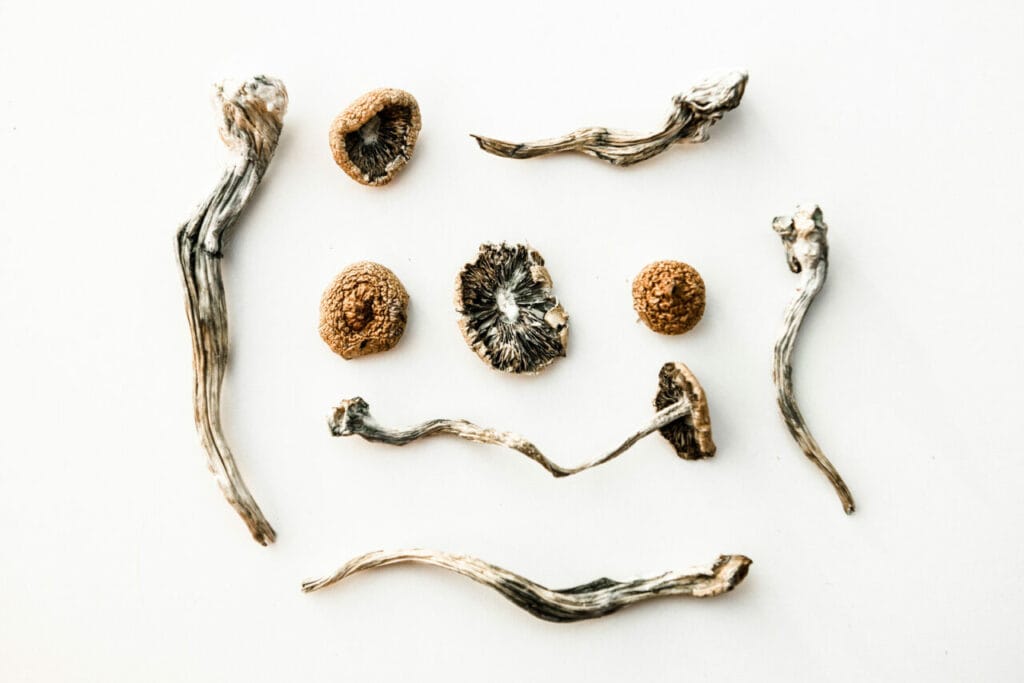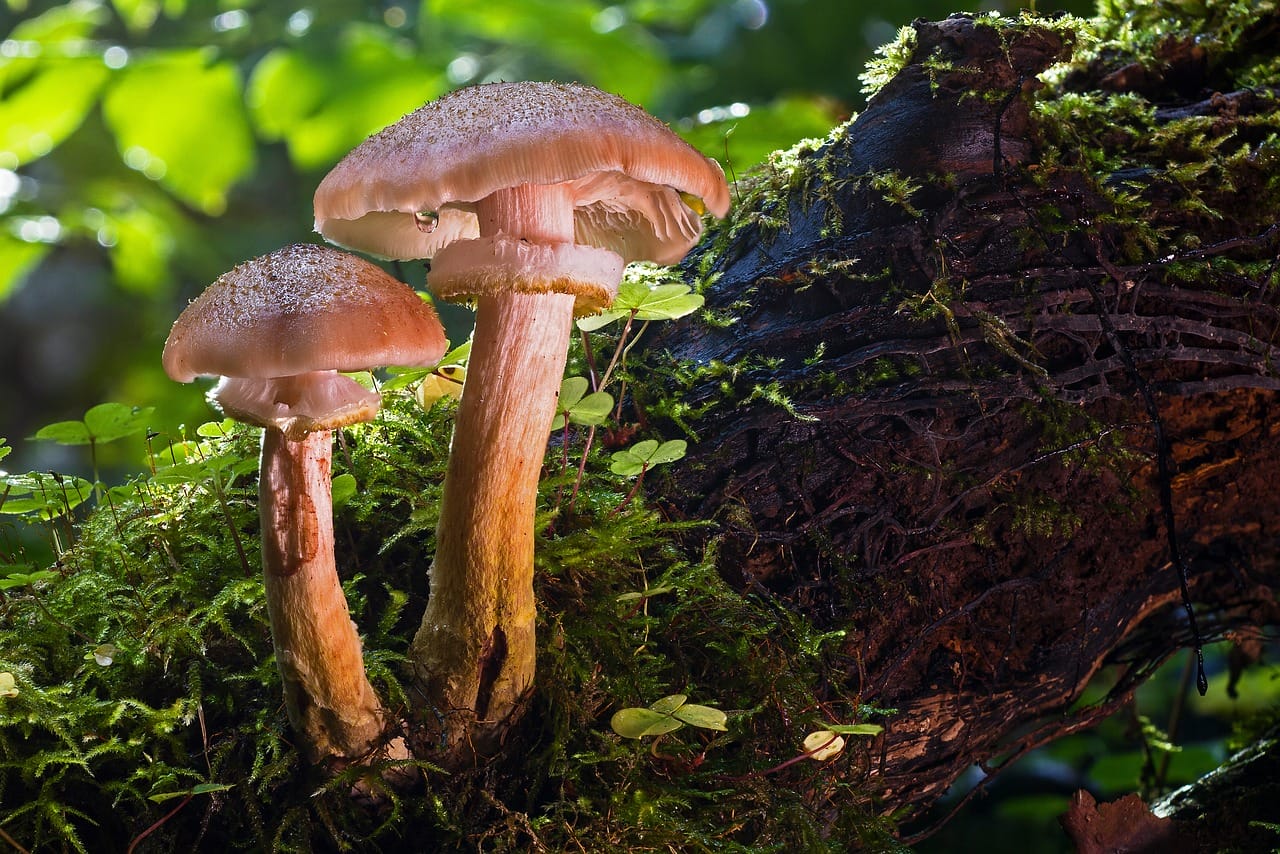Originally, many Canadians viewed magic mushrooms as a psychedelic substance primarily used for recreational purposes. However, scientists’ research on the active component psilocybin revealed its powerful effectiveness in addressing various mental health conditions.
As more information comes to light, our understanding of psilocybin’s uses progresses. The more the knowledge, the easier it is for people to obtain these products using magic mushroom delivery services. A recent study underscores its impact on human consciousness. Could this shed light on its substantial effect on the human brain? Let’s dive deeper into this fascinating exploration of magic mushroom products.
Key Points:
- The cognitive functioning of ancient humans was influenced by psychedelic magic mushrooms, which aided their survival.
- Mushrooms play a significant role in neurological health due to their ability to ease PTSD, depression, and anxiety.
- The impact of psilocybin on consciousness and brain function may have fostered creativity, introspection, and abstract thinking.

Historical Consumption and Significance of Magic Mushrooms
Historical evidence indicates that our ancestors have been tapping into the benefits of psychedelic magic mushrooms since antiquity. Indigenous societies utilized them in sacred rituals and traditional ceremonies to honor their gods. They flourish worldwide, especially in subtropical and tropical areas, including South and Central America, the Caribbean, Southeast Asia, and Africa.
The Role of Magic Mushrooms in Ancient Civilizations
The Indigenous inhabitants of Mexico have relied on these fungi for spiritual enlightenment, divine interaction, and religious rituals since ancient times. The Aztec Indians of South America referred to it as “God’s Flesh” and incorporated it into healing rituals.
Evidence of use can be traced back to:
- Approximately 10,000 years ago in Australia
- Around 7,000 years ago in North Africa
- Nearly 6,000 years ago in Spain.
These findings are often pointed to by some researchers as evidence of the wide historical usage of psilocybin. Upon ingesting mushrooms, individuals typically experienced an intense sense of joy, their hallucinations often marked by complex geometric and visual designs.
The Significance of Mushrooms in the Bronze Age History of Spain
During the mid-1990s, scientists discovered remnants, particularly hair strands from about 200 Bronze Age societies, hidden inside a cave in Minorca, Spain. These artifacts were astonishingly well-preserved due to the cave’s entrance being sealed by fallen debris. Examination revealed that these hair samples contained traces of three alkaloids, compounds known to affect the human mind and trigger altered states of consciousness.
These discoveries provide fascinating perspectives into how and why ancient societies made use of these substances. Surprisingly, reaching an elevated state of consciousness was fairly normal during these times. However, the question still stands, what influence did these substances exert on human evolution?
Psilocybin and the “Big Bang Theory” of Human Consciousness Evolution
In recent years, there has been a revival of interest in psychedelic research, reasserting the hypothesis that psychedelics contributed to the evolution of consciousness. This idea, referred to as the stoned ape theory, was proposed by ethnobotanist Terence McKenna. The theory posits that the ingestion of psychedelics might have influenced the cognitive and cultural evolution of humans.
According to Dr. Thomas Falk, a professor of Philosophy and Education at the University of Dayton, this theory might shed light on the purported “creative explosion” that took place among Homo sapiens around 40,000 years ago, signifying a monumental leap in early human cognitive capabilities.
It’s suggested that psychedelics facilitated early humans to dwell in self-created universes. Over time, their enhanced cognitive skills allowed them to recreate these experiences in their tangible environment.
In his work, “Food of the Gods“, Terence McKenna laid out his arguments that the stoned ape hypothesis is anchored in ancient shamanistic traditions and an assumed variety of plants and fungi.
“Ability to Provoke Neurological and Psychological Transformations”
Psychoactive substances possess the potential to initiate significant neurological and psychological alterations. These transformations could have played a crucial role in the development of our species.
The study utilized a diverse approach that incorporated biology, ethnobotany, and neuroscience to examine the existing research on psilocybin and its influence on human consciousness. It proposes that the early humans’ increased interaction with these fungi during their environmental shift from forests to grasslands, which led to an amplified exposure to animal dung and subsequent rise in consumption. The study refers to the “stoned ape” theory, suggesting that this dietary change could have triggered significant cognitive transformations in early hominids.
Effects of Consuming Psychoactive Substances
The potential outcomes of this fungi consumption could have included enhanced hunting and scavenging abilities, amplified sexual desires, and heightened sensory perception. Coupled with psilocybin’s impact on consciousness and brain function, it is conceivable that these elements could have spurred creativity, introspection, and abstract thinking, all vital for language development.
The Peruvian scientists who undertook the study emphasize the importance of more research into these substances’ effects on the brain and human evolution. While it has impacted areas of the brain related to memory, decision-making, and introspection, the evolutionary implications are still under active exploration.
An independent genetic study hints that magic mushrooms emerged roughly 67 million years ago. Humans began consuming these fungi millions of years ago, far preceding the use of marijuana.
What Are Dried Magic Mushrooms Made Of?
They contain a psychedelic substance known as psilocybin. Its effects can vary depending on individual tolerance, body weight, and method of consumption. Here are some potential effects:
- Overwhelming joy
- Feeling of tranquility
- Spiritual enlightenment and introspection
- Experiencing a dreamlike state and feeling disconnected from one’s physical environment
- Modified visuals, such as seeing light halos and vibrant colors
- Enhanced sense of well-being
Despite its recreational use, many people employ it for its medicinal benefits, particularly for its favorable effects on brain health.
Influence on Neurological Health
The potent compound alters mood, perception, and cognition by interacting with serotonin receptors found in the prefrontal cortex. This interaction enhances cognitive abilities, including the manipulation of visual and auditory experiences, thereby amplifying an individual’s performance on tasks.
Historical Connection
This principle may also apply to our early ancestors, specifically the so-called stoned apes. Their exposure to and use of these fungi, particularly during their ecological transition from forest to grassland habitats, resulted in increased exposure to animal feces, thus increasing their consumption of these mushrooms. The “stoned ape” hypothesis, which is mentioned in the study, suggests that this dietary shift may have instigated significant changes in the brain structures of early hominids.
The ingestion of psilocybin mushrooms might have influenced the evolution of their consciousness and cognitive abilities. This could potentially explain the development of their essential survival skills.
Present and Future Interactions
Recent research has shown that individuals suffering from conditions such as cluster headaches, anxiety, anorexia, obsessive-compulsive disorder, PTSD, and depression typically have reduced serotonin levels. While selective serotonin reuptake inhibitors (SSRIs) are commonly used to treat these conditions, they often require a significant period of time to demonstrate effectiveness. Conversely, shrooms can prompt immediate alterations in brain neuron connectivity.
Current Psychedelic Research – Clinical Trials
Since the early 2000s, scientists have been exploring novel treatments for various psychiatric and behavioural disorders that are customized to the individual patient’s needs.
Due to its capacity to infiltrate the central nervous system and augment cognitive function, it has proven effective in therapeutic applications. Recent research progress in 2020 suggests that psychedelic therapy using psilocybin products provides relief from severe depression.
According to Matthew Johnson, a professor at Johns Hopkins Medicine, these substances alter the communication patterns between different brain systems. An increased connectivity among brain regions that usually do not interact effectively has been observed. On the other hand, regions that typically interact frequently display reduced communication.
This induced chaos is not merely a side effect but holds potential therapeutic value. Depressed individuals often fall into self-critical, repetitive thought cycles that worsen their conditions. Psychedelics interrupt these cycles, facilitating individuals to escape from their deep-rooted negativity during a psychedelic experience. This results in more flexible thinking and improved ability to manage critical
Procure Magic Mushrooms Online: A Gateway to Recovery
A broad spectrum of these controlled substances can be found online. Choose from a variety that is safe, lab-verified, and negates the possibility of accidentally buying harmful mushrooms. Reliable vendors ensure the quality and safety of the products they offer.
| Product | Psilocybin Content | Psilocin Content | Benefits |
| Enigma | 0.76% | 0.07% | Boosts Focus, Produces Elevating Effects |
| Atlantic Treasure Coast | 0.59% | 0.08% | Boosts Concentration, Spurs Creativity, Encourages Neuroplasticity |
| Blue Magnolia | 0.58% | 0.08% | Enhances Memory, Assists in Tackling Depression and Anxiety |
| Cambodian | 0.45% | 0.06% | Supports in Treating PTSD and Anxiety, Aids in Substance Abuse Recovery, Uplifts Mood |
Unmasking the Hidden Potential of Magic Mushrooms
All current advancements we witness, including civilizations, urbanizations, and societies, stem from various developments. Although the stoned-ape hypothesis may be a theoretical conversation between two individuals, scientific researchers are gradually discovering evidence that reinforces the concept of psilocybin contributing significantly to human evolution.
If you’re in pursuit of expedited cognitive growth, Buy Magic Mushrooms Canada’s magic mushroom delivery service is your premier destination. We offer a comprehensive selection of high-quality shrooms from A to Z, with prompt delivery options in British Columbia and other regions.
Embark on the journey of personal growth — scan through our assortment of superior psychedelics online Canada today.
Commonly Asked Questions
What variety of shrooms did ancient civilizations consume?
Various forms of fungi exist worldwide, thus there isn’t a single type consumed by all communities. Some favored the well-known liberty caps, while others preferred Psilocybe cubensis. Most of them either ate these mushrooms raw or prepared edible forms like tea blends.
What role do psychedelics play in contemporary human development?
In the modern context, psychedelics primarily function by activating the 5-HT2A receptor subtype. This interaction has been found to be effective in managing stress-related disorders and notably impacts creativity and social behavior. Such effects could enhance adaptability and survival, especially in societies that rely heavily on knowledge acquisition and social cooperation.
Did the use of shrooms in spiritual practices influence human evolution?
Indeed, spiritual rituals involving shrooms played a significant role in human evolution by shaping cultural, religious, and social frameworks. They foster a deep sense of connection, stimulate creativity, and promote community cohesion.
Articles of Interest:





